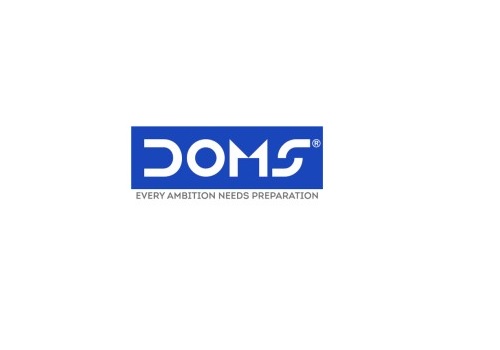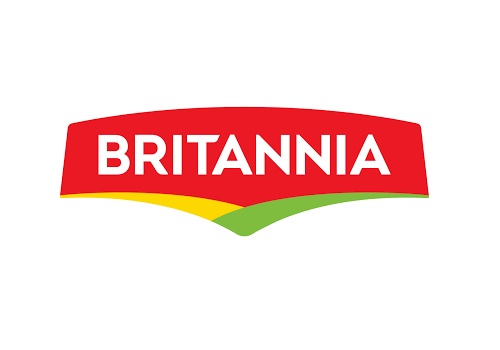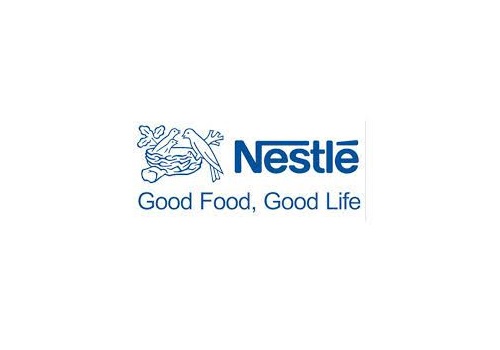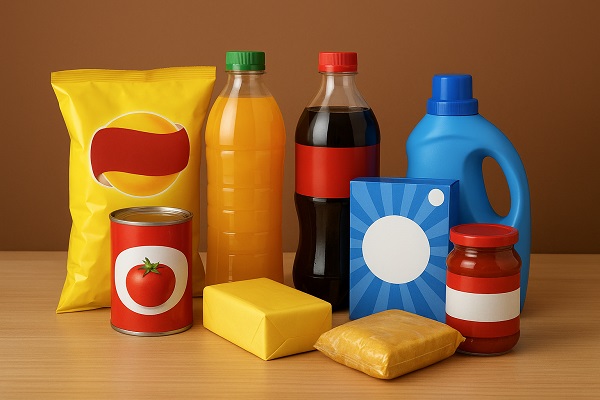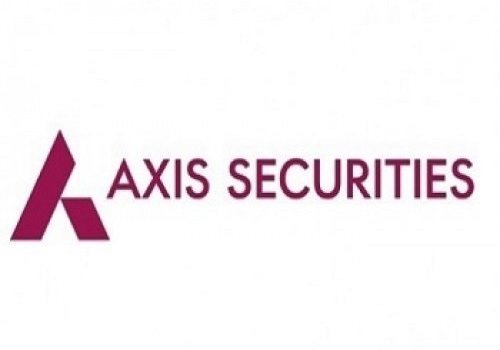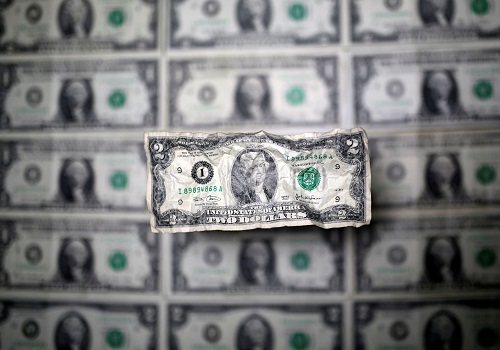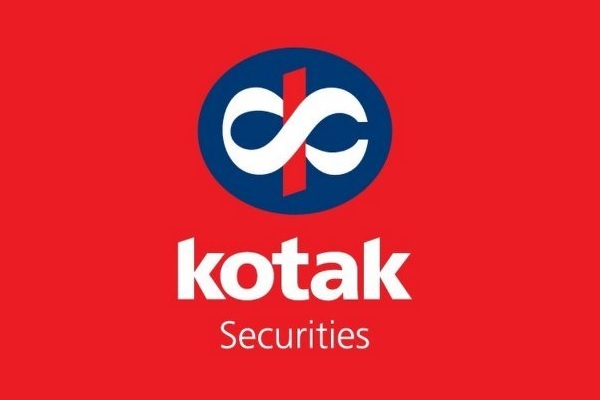Turmeric trading range for the day is 14730-16846 - Kedia Advisory

Gold
Gold prices experienced a 0.46% increase, settling at 56,871, driven by short covering. This uptick followed a drop in prices caused by a robust United States Nonfarm Payrolls (NFP) report for September, which revealed higher-than-expected job hirings. The US non-farm payrolls rose by 336 thousand in September, the highest in eight months, indicating a tight job market and suggesting that interest rates may remain elevated. Meanwhile, the economic outlook in Europe remains uncertain. The European Central Bank (ECB) is likely done with rate hikes but has committed to maintaining restrictive borrowing costs until inflation returns to target levels. On the demand side, physical gold demand improved in certain Asian markets due to lower prices attracting buyers. In India, premiums reached a 17-month high as jewellers stocked up for the festival season, resulting in premiums of up to $5 an ounce over official domestic prices. Traditionally, gold demand in India strengthens towards the end of the year, during the wedding season and major festivals like Diwali and Dusherra. On the other hand, gold premiums in China had eased after hitting record highs in September due to import quota limitations. From a technical standpoint, the market is currently in a phase of short covering. Open interest has dropped by -2.46%, settling at 15,959. Gold has found support at 56,560, with a possible test of 56,245 if this level is breached. Resistance is likely at 57,050, and a move above could lead to prices testing 57,225.
Trading Ideas:
* Gold trading range for the day is 56245-57225.
* Gold gains on short covering after prices dropped as US NFP report were significantly higher than expectations.
* Fedís Daly sees no more rate hikes if the labor market slows and inflation remains close to 4%.
* Taking cues from the US ADP Employment report, job creation is foreseen to slow.
Silver
Silver prices surged by 2.1%, settling at 68,170, driven by short covering and several factors. Tight supply, the growing use of silver in solar panel technologies, and hopes for China's economic recovery all contributed to this increase. However, the stronger-than-expected US job report suggested the possibility of another interest rate hike by the Federal Reserve. In the US, non-farm payrolls rose by 336 thousand in September, the highest in eight months, indicating a still tight job market and reinforcing the need for elevated interest rates. Meanwhile, Europe's economic outlook remains uncertain. The ECB has likely concluded rate hikes but intends to maintain restrictive borrowing costs until inflation returns to target levels. Silver plays a dual role as an investment asset and a crucial component in various industries, including electronics, electric vehicles, and solar panels. Its demand extends beyond investment sentiment. The silver market faces a supply deficit, with mining production unable to meet demand. In 2022, the market experienced a deficit of 237.7 million ounces, and deficits are expected to persist. From a technical perspective, the market is currently undergoing short covering. Open interest has dropped by -21.21%, settling at 26,315. Silver has found support at 67,095, with a potential test of 66,015 if this support level is breached. Resistance is likely at 68,775, and a move above this level could lead to prices testing 69,375.
Trading Ideas:
* Silver trading range for the day is 66015-69375.
* Silver rose on short covering underpinned by tight supply
* However stronger-than-expected job report for the US supported the case for one more hike by the Fed.
* Silver serves both as an investment asset and a key component in various industries, including jewelry, electronics, electric vehicles, and solar panels
Crude oil
Crude oil prices fell by 0.65% to 6875 due to concerns about weakening global demand, despite ongoing supply constraints. Russia allowed diesel fuel exports through its ports but continued to restrict gasoline exports. US gasoline stocks surged, and gasoline demand hit a low not seen since 1998, signaling reduced consumption. Meanwhile, OPEC+ decided to maintain their existing oil output policy, extending voluntary supply cuts through the end of the year, aligning with the decisions of Saudi Arabia and Russia. US crude stocks at the Cushing, Oklahoma, storage hub increased for the first time in eight weeks, rising by about 130,000 barrels to 22.1 million barrels. However, overall US crude stocks fell to 414.1 million barrels, the lowest since December 2022. Despite the challenges, US crude oil output approached pre-COVID levels in July, driven by record production from Texas, the top US shale oil producer. US crude production grew by 0.7% to 12.99 million barrels per day (bpd) in July, the highest since November 2019. From a technical perspective, the market experienced long liquidation, with open interest dropping by 4.39% to 11,883. Crude oil found support at 6,813, with the potential for a test of 6,750 if this support level is breached. Resistance is likely at 6,938, and a move above could lead to prices testing 7,000.
Trading Ideas:
* Crudeoil trading range for the day is 6750-7000.
* Crude oil dropped due to concerns about weakening global demand, despite tight supply worries.
* Russia allowed diesel fuel exports via ports again after a recent ban, but gasoline exports remained restricted.
* EIA data showed that US gasoline stocks surged, and gasoline demand hit a 1998 low
Natural gas
Natural gas prices surged by 3.8%, settling at 275.9, driven by a combination of factors. Lower output, increased exports, and expectations of cooler weather in the coming weeks all contributed to the price increase. Australia, the world's largest LNG exporter in 2022, played a role in supporting the market. Demand for natural gas is expected to hit record levels this winter. However, the Natural Gas Supply Association (NGSA) cautioned that despite this increased demand, factors like sufficient storage, higher production, and a slowing economy could weigh on US natural gas prices. NGSA's Winter Outlook for 2023-2024 forecasted natural gas storage at 3.7 trillion cubic feet (tcf), surpassing the previous winter's 3.5 tcf. US natural gas storage will reach 3.847 tcf by the end of the summer injection season on October 31, the highest since 2020. This contrasts with 3.569 tcf in storage at the end of the summer season in 2022, and it exceeds the five-year average of 3.628 tcf. Looking ahead to the end of the winter withdrawal season in March 2024. From a technical perspective, the market is currently experiencing fresh buying interest, with open interest increasing by 0.53% to settle at 25,802. Natural gas has found support at 267.6, with the possibility of a test of 259.4 if this support level is breached. Resistance is likely at 280.4, and a move above this level could lead to prices testing 285.
Trading Ideas:
* Naturalgas trading range for the day is 259.4-285.
* Natural gas climbed on lower output, rising exports
* Workers at U.S. energy firm Chevron's two liquefied natural gas (LNG) export plants in Western Australia voted to restart strikes
* Natural gas demand is projected to scale a new record this winter
Copper
Copper prices saw a significant increase of 1.32%, settling at 705.9, driven by short covering and concerns of an impending shortage. Reports from S&P Global and the EIA indicate a projection of copper demand doubling by 2035, contrasting with the International Copper Association's more conservative forecast of a 26% supply increase. This disparity raises worries of potential wide shortfalls in the market. In the short term, Codelco, a major copper producer, reported a 14% drop in output during the first half of the year, exacerbating the 7% decline observed in 2022. However, concerns about China's economic outlook have created pressure on copper demand, amid fears of financial instability stemming from indebted property developers. Copper prices in 2023 initially showed strength but experienced a mid-year decline due to China's economic challenges. Nevertheless, they have begun to recover, despite mixed market forecasts. China's increasing demand for copper is driven by its expanding green economy, solar installations, and manufacturing sector. Citi's outlook suggests potential near-term downside for copper prices (0-3 months) with a potential drop to $7,500 per ton. However, the base case anticipates copper trading in the range of $7,500 to $8,500 per ton over the next 6-9 months. From a technical perspective, the market is currently experiencing short covering, with open interest declining by -13.9% to settle at 7,155. Copper has found support at 698.7, with the possibility of a test of 691.6 if this support level is breached. Resistance is likely at 710.2, and a move above could lead to prices testing 714.6.
Trading Ideas:
* Copper trading range for the day is 691.6-714.6.
* Copper prices gained on short covering amid looming shortage concerns.
* Trafigura sees potential $12,000 high for copper
* Citi foresees near-term (0-3 months) downside for copper prices, with a potential drop to $7,500 per ton
Zinc
Zinc prices increased by 0.63%, settling at 222.85, driven by hopes for China's economic recovery and expectations of reduced production in small and medium-sized zinc mines, particularly in Europe and Australia, where high operating costs have posed profitability challenges. China's increased metal imports in July, the highest since April 2019, and the rise in the official manufacturing PMI to 50.2 in August, indicating sector expansion, also bolstered zinc's prospects. However, concerns lingered about extended elevated interest rates. Predictions suggest zinc prices may fall to $2,300 per ton within the next three months and maintain this level into the first half of 2024. Despite increased domestic zinc output in China this year, the market remains affected by shrinking inventory levels and constrained time spreads. Data from the International Lead and Zinc Study Group (ILZSG) revealed that the global zinc market surplus narrowed to 17,400 metric tons in July from 75,900 tons the previous month. In the first seven months of the year, the global surplus amounted to 495,000 metric tons, compared to a surplus of 199,000 tons during the same period last year. From a technical perspective, the market is currently experiencing short covering, with open interest dropping by -0.88% to settle at 3,275. Zinc has found support at 221.4, with the possibility of a test of 219.8 if this support level is breached. Resistance is likely at 224.3, and a move above could lead to prices testing 225.6.
Trading Ideas:
* Zinc trading range for the day is 219.8-225.6.
* Zinc gains amid renewed hopes for China's economic recovery and expectations of reduced production
* Zinc prices are predicted to fall to $2,300 per ton within the next three months - Citi
* China's domestic output of refined zinc this year has risen
Aluminium
Aluminium prices inched up by 0.1%, settling at 205.75, mainly due to low-level support following previous drops attributed to a strengthening dollar, which raised concerns about industrial metal demand. Citi's base case scenario suggests that aluminium prices may gradually decline to $2,100 per ton over the next 0-3 months. China, the world's largest aluminium producer responsible for over half of global output, has taken steps to curb production capacity expansion to prevent oversupply and excessive energy consumption from outdated infrastructure. Meanwhile, Indonesia's ban on bauxite exports, a primary source of aluminium production, poses a risk to output. These developments recently led to a 13% week-on-week reduction in deliverable stocks at the Shanghai Futures Exchange in late September. The HCOB Eurozone Manufacturing PMI remained relatively stable at 43.4 in September 2023, just slightly down from the previous month's 43.5, indicating ongoing challenges in the manufacturing sector. Similarly, the HCOB Germany Manufacturing PMI was revised slightly lower to 39.6 in September 2023, pointing to a fifteenth consecutive month of contraction in the German manufacturing sector. From a technical standpoint, the market is currently experiencing fresh buying interest, with open interest increasing by 3% to settle at 3,672. Aluminium has found support at 205, with the potential for a test of 204.2 if this support level is breached. Resistance is likely at 206.6, and a move above could lead to prices testing 207.4.
Trading Ideas:
* Aluminium trading range for the day is 204.2-207.4.
* Aluminium recovered on low level support after prices dropped as the soaring dollar reinforced concerns about demand
* Citi expects aluminum prices to grind lower to $2,100 per ton in the 0-3 month horizon.
* China halted the expansion of production capacity beyond the current limit of 45 million tons
Cottoncandy
Cottoncandy prices dipped by -0.27% to 59840 due to profit booking, following reports of a pink bollworm attack in Haryana's cotton belt. The global cotton industry is facing reduced production and consumption in the 2023-24 outlook. In the U.S., cotton projections for 2023/24 show lower production, exports, and ending stocks, with a season-average price of 80 cents per pound. Worldwide, there are lower projections for beginning stocks, production, consumption, trade, and ending stocks compared to the previous month. India is expected to produce 330-340 lakh bales of cotton in the upcoming 2023-24 season. Sowing has already crossed 12.7 million hectares, and the current season has seen 335 lakh bales arrive in the market. Cotton picking will gain momentum in Telangana in November, and the central government has forecast normal rainfall and an increase in crop area for 2023-24. In Rajkot, a major spot market, cotton prices ended at 28665.4 Rupees, a slight drop of -0.06%. Technically, the market witnessed fresh selling with a slight increase in open interest by 0.9%. Support for Cottoncandy is at 59800, with potential testing of 59750 levels if it goes lower. Resistance is likely at 59900, and breaking above could lead to prices testing 59950.
Trading Ideas:
* Cottoncandy trading range for the day is 59750-59950.
* Cotton dropped on profit booking after prices rose as cotton belt of Haryana, is witnessing an attack by pink bollworm.
* India is expected to see production of 330 lakh to 340 lakh bales in 2023-2024 that begins on October 1.
* China's cotton production was lowered to 5.9 million metric tons on reduced planted area for 2023/24
* In Rajkot, a major spot market, the price ended at 28665.4 Rupees dropped by -0.06 percent.
Turmeric
In the turmeric market, recent developments have led to a 0.33% increase in prices, settling at 15,584. This uptick is primarily driven by concerns over potential yield losses due to unfavorable October weather conditions, which the Indian Meteorological Department (IMD) predicts to be drier than average. These weather challenges could impact crop growth and supply levels. Additionally, there is growing support for improved export opportunities, as demand for turmeric has surged in both developed and emerging nations, resulting in a notable 25% increase in exports. One significant factor influencing the current situation is the expectation of a 20Ė25% decline in turmeric seeding this year, particularly in key producing regions like Maharashtra, Tamil Nadu, Andhra Pradesh, and Telangana. Looking at export data, from April to July 2023, turmeric exports have risen by an impressive 15.05%, with 71,616.77 tonnes exported compared to 62,245.73 tonnes during the same period in 2022. However, there was a decline of 24.60% in exports in July 2023 compared to June 2023, with 13,841.47 tonnes shipped out. In the key spot market of Nizamabad, turmeric prices ended at 14,058.6 Rupees, marking a gain of 1.3%. From a technical standpoint, the market is currently witnessing fresh buying, with a 16.45% increase in open interest, settling at 9,165. Prices have also risen by 52 rupees. Key support levels for turmeric are at 15,158 and 14,730, while resistance is likely to be encountered at 16,216, with the potential for prices to test 16,846.
Trading Ideas:
* Turmeric trading range for the day is 14730-16846.
* Turmeric prices rose due to expected October weather yield losses
* According to IMD, October is projected to be drier than average, which will have an impact on crop growth.
* Support is also evident for improved export opportunities.
* In Nizamabad, a major spot market, the price ended at 14058.6 Rupees gained by 1.3 percent.
Jeera
Jeera prices experienced a slight dip of -0.48% settling at 59,590 due to profit booking. Earlier, prices had risen due to a decrease in local market supplies. The ongoing festive demand and limited availability of quality crops are motivating millers to buy when prices dip. However, Indian jeera remains competitively priced in the global market, which is limiting overseas demand. China, a major buyer of Indian jeera, has reduced its purchases in recent months, impacting overall exports from India. There is some uncertainty in the market dynamics as China might resume purchases in October-November before the arrival of new cumin crops. According to FISS forecasts, cumin demand is projected to exceed supply this year, with an expected supply of 65 lakh bags against a demand of 85 lakh bags. In terms of exports, from April to July 2023, jeera exports dropped by 7.99% compared to the same period in 2022, with 61,697.44 tonnes exported. July 2023 saw a 20.30% decrease in exports compared to June 2023, with 8,297.79 tonnes shipped. However, this is a significant drop from July 2022, where 19,866.18 tonnes were exported, reflecting a 58.23% decrease. In the major spot market of Unjha, jeera prices ended at 59,505.75 Rupees, down by -0.63%. From a technical perspective, the market is experiencing fresh selling, with a 19.75% increase in open interest, settling at 2,928. Prices have dropped by -290 rupees. Key support levels for jeera are at 58,970 and 58,340, while resistance is likely at 60,260, with the potential for prices to test 60,920.
Trading Ideas:
* Jeera trading range for the day is 58340-60920.
* Jeera dropped on profit booking after prices gained due to shrinking supplies
* Increased festive demand and limited availability of quality crops in the market is prompting miller to buy
* However, sluggish export demand is still a major concern for Indian traders
* In Unjha, a major spot market, the price ended at 59505.75 Rupees dropped by -0.63 percent.
Views express by all participants are for information & academic purpose only. Kindly read disclaimer before referring below views. Click Here For Disclaimer
